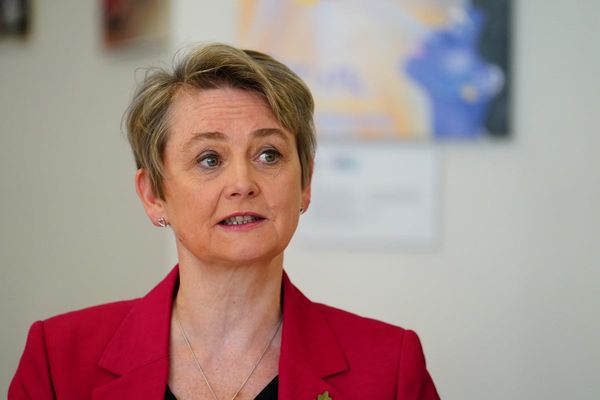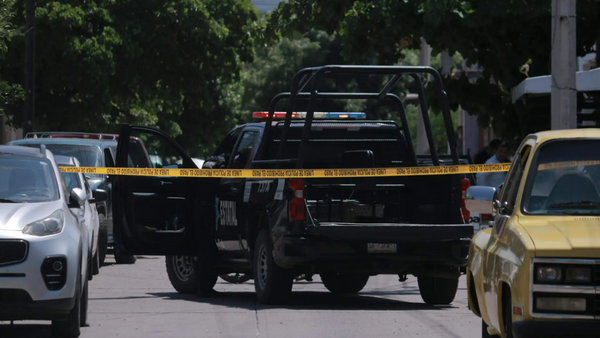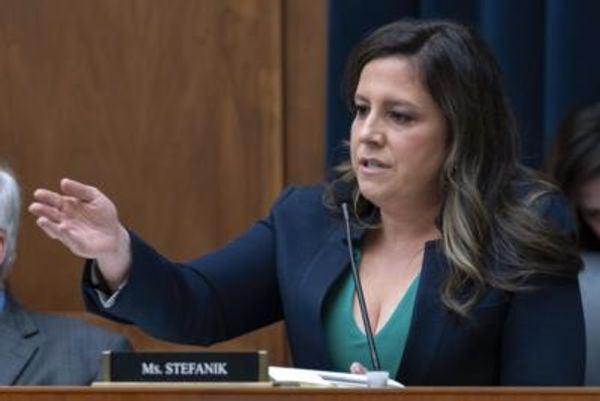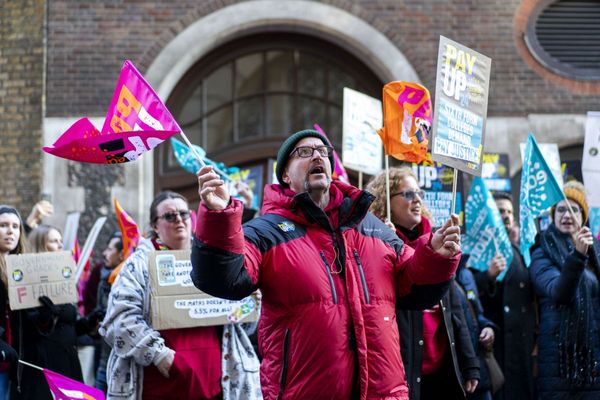
COVID-19 could not have arrived in Iran at a worse time. Within weeks of confirming its first case, infections exploded, briefly turning the country into the epicenter of the world’s coronavirus outbreak at a time when its economy was already reeling from U.S. sanctions.
Iran’s first official cases of the new coronavirus were announced on Feb. 19: two deaths in the holy city of Qom. Alarm bells should have gone off immediately.
The cases were discovered as deaths, not active infections, meaning the virus had spread unchecked through these individuals before they became severely ill and died. Moreover, the virus had a gateway to spread worldwide, as Qom is a hub for international religious tourism. Rather than reacting swiftly, government officials advised Iranians simply not to visit the city. State-run news outlets still instructed Iranians to turn out and vote in elections. And within two weeks, Iran had reported the highest number of deaths from the virus outside of China.
By early May, the government had controlled the virus, albeit at the expense of national GDP, which dropped by 15 percent. So, President Hassan Rouhani prematurely reopened the economy. This move would usher in Iran’s second wave of infections in June, bringing new cases per day to over 3,000, according to the official news agency, IRNA. As of Aug. 27, Iran has confirmed a total of 367,000 cases of the coronavirus and over 21,000 deaths. The virus has spread from Iran to neighboring countries—including Iraq, Afghanistan, Lebanon, the United Arab Emirates, and other Gulf states, as well as such far-flung countries as the United Kingdom, Canada, and the United States.
Why was Iran’s initial outbreak so devastating in scale, severity, and spread? Our analysis reveals six major factors, both national and international, that exacerbated Iran’s outbreak. The first factor is abysmal government leadership. Iran’s government has been roundly critiqued for politicizing its response to the coronavirus and failing to give decision-making authority to health experts and health care workers.
Days after the virus was confirmed to have arrived in Iran, Supreme Leader Ali Khamenei called reports of the virus “negative propaganda” from foreign media, rather than addressing the health threat. While the virus spread from Qom, Deputy Health Minister Iraj Harirchi dismissed quarantining as a “Stone Age” measure, a day before himself testing positive for the coronavirus. Later, on March 11, Iran’s minister of health was replaced by Rouhani as chair of the national COVID-19 task force—symbolizing the government’s politicization of its coronavirus response.
The second factor exacerbating Iran’s outbreak was inconsistent reporting on the spread of the virus. Early in Iran’s outbreak, health care workers and journalists reported government suppression of information related to the coronavirus. On March 3, a nurse at Alborz Hospital in Karaj said, “We have been instructed not to report the number of casualties, and only the Ministry of Health should share this with us.” This account is consistent across numerous individual and anonymous reports, including one provided to the Committee to Protect Journalists by an Iran-based reporter on March 17.
“Both the judiciary and the Rouhani administration told Iranian journalists working inside the country not to cover the death toll caused by the coronavirus,” the journalist said. Indeed, Iran’s proclivity for censorship undermined the transparency needed for swift containment of the coronavirus. A World Health Organization (WHO) technical support mission to Iran identified another, more innocuous, problem: “The weakest link in their chain is the data,” said Rick Brennan, the emergency director for the region. Iran, like many other countries early in the outbreak, needed to test more people in order to report more robust numbers.
Third, Iran’s parliamentary election, on Feb. 21, was slated to take place only days after the country confirmed its first case of the coronavirus—and officials continued encouraging Iranians to go vote. Public trust in the regime had declined in January after Iran mistakenly shot down a Ukrainian passenger plane near Tehran, accidentally killing all 176 passengers, and then attempted to conceal its role in the incident. Given the government’s vested interest in driving up voter turnout despite public distrust, it appears to have downplayed the threat posed by the coronavirus.
Fourth, the media landscape in Iran is largely restricted to publishing the government’s official narrative, as most outlets are either state-run or heavily censored. The role of a free and independent press during a pandemic is critically important: it helps keep people informed, holds governments accountable, and circulates evidence-based methods for individuals to prevent infection.
During the pandemic, state-run media outlets such as Tasnim, linked to Iran’s hard-liners, have instead published messaging on the coronavirus being a U.S. bioweapon or propaganda to deter voters from parliamentary elections. Meanwhile, independent reporting by Iranian journalists and social media users about the coronavirus has resulted in detention or censorship, according to Reporters Without Borders.
Many Iranians appear to source their news from foreign news outlets or social media when they are able to access them. The danger of overreliance on the latter, of course, is that social media can be a vector for misinformation. For instance, a prominent ayatollah, Abbas Tabrizian, posts home remedies for COVID-19 on a popular messaging platform called Telegram. He advises readers to “eat lots of apples and onions” and to “drench cotton wool in violet oil before bedtime and insert into your anus.” Sales of alternative medicines rose, while essential medicines, which are difficult to import due to U.S. sanctions, remain scarce and costly.
Fifth, U.S. sanctions against Iran have pushed the country into an even deeper economic crisis, and further sanctions during the pandemic forced Iran into choosing between economic preservation and public health. Solvency was prioritized when Iran’s government-affiliated airline continued flying to and from China, Iran’s top oil customer and thus economic lifeline; when the Rouhani administration lifted economic lockdowns, spurring Iran’s second wave; and when Tehran was reluctant to halt cross-border trade.
In 2019, the International Monetary Fund reported that Iran’s economy was contracting by 9.5 percent (up from 4.8 percent in 2018). This year, the country’s economy was finally predicted to stabilize with zero shrinkage. This is because Iran had diversified its exports from oil (slammed by U.S. sanctions) to manufactured goods, which it sends across the Middle East and to China, Russia, and Europe. Given Iran’s outsized reliance on exports and economic precarity amid U.S. sanctions, the regime was understandably reluctant to halt trade across its borders and risk offending China.
Finally, U.S. sanctions also have the impact of blocking Iran’s access to the international financial system. In October 2019, Human Rights Watch released a report detailing the outsized impact of sanctions on receipt of humanitarian aid in Iran, especially to health care goods and essential medicines. Despite the U.S. government building exemptions into its sanctions regime, companies and banks often over-comply with regulations because they are broad, complex, and often supported by hostile anti-Iran rhetoric from Washington.
By maintaining its sanctions regime, the Trump administration has deprived Iran of access to critical medical resources in its moment of utmost need. From the ground, WHO regional emergency director Brennan reported visiting new health centers in March where everything—bedsheets, oxygen masks, personal protective equipment—had been made locally. Brennan suggested that the locally produced equipment may have been substandard and exposed medical workers to risk of infection. The Trump administration’s continued use of economic sanctions is callously harmful, unnecessarily prioritizing its own political agenda above Iranian lives.
Iran’s response to the first wave of the coronavirus in early 2020 illustrates how the politicization of health care, both domestically and internationally, unnecessarily endangers human lives. Moreover, Iran’s second wave of infection mirrors the first in five of six causes: It was incited by poor government leadership that prioritized reopening, exacerbated by deliberate suppression of COVID-19 death numbers, worsened by media disinformation campaigns from Tehran, and enabled by fresh U.S. sanctions on Iran’s economy and access to the international financial system.
In the face of the continued coronavirus crisis, Iran’s government may continue to blame the United States for its sanctions regime. Similarly, the United States may continue to blame Iran’s government for poor leadership. But to do so would be to allow both countries’ politicking to distract from the real toll: Iranian lives.







